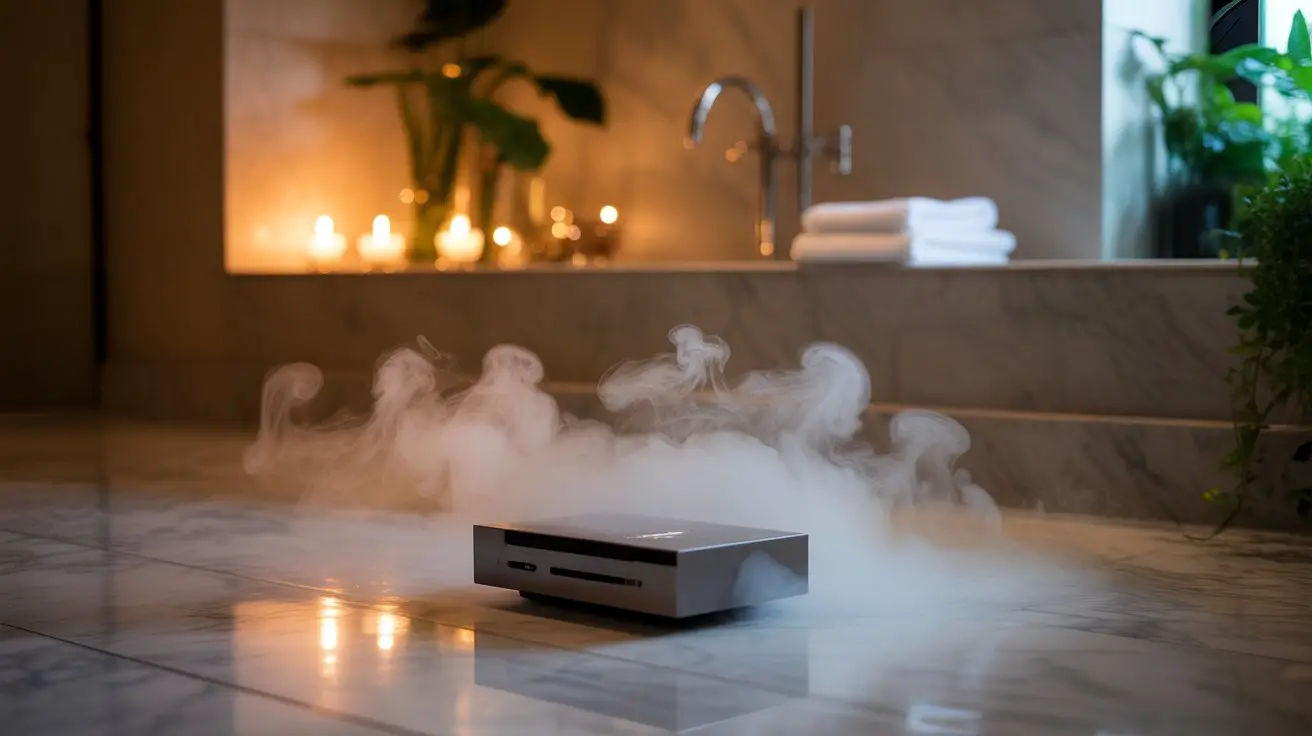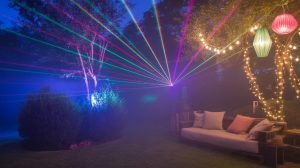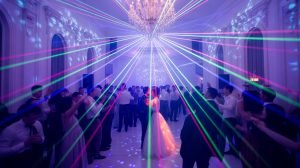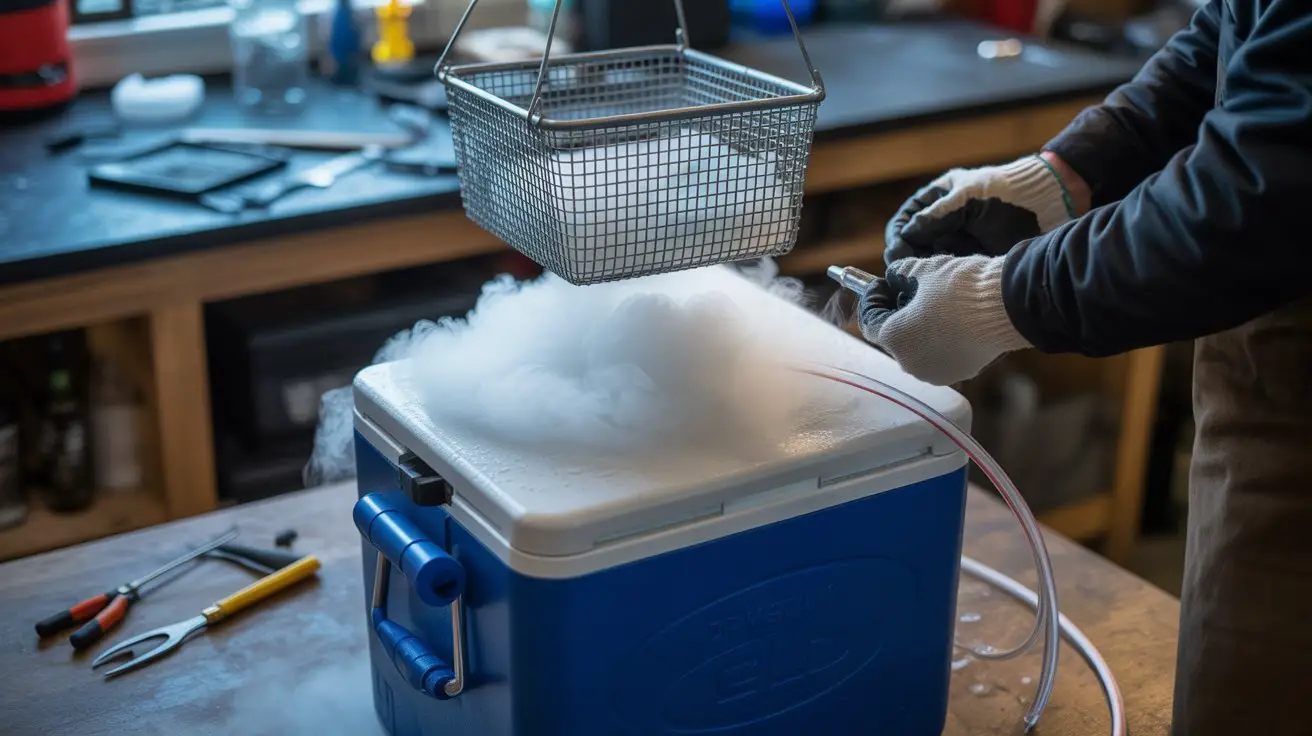You can transform your bathroom or bedroom into a luxurious spa retreat using the right fog machine setup, but there’s more to achieving that perfect misty ambiance than simply plugging in a device and pressing start. The key lies in understanding how different fog fluid compositions interact with your space’s ventilation, lighting angles, and aromatherapy elements to create an authentic wellness experience that won’t compromise your indoor air quality or safety.
Choosing the Right Fog Machine for Your Home Spa
When selecting a fog machine for your home spa, you’ll need to evaluate several technical specifications that directly impact both the atmospheric effect and your wellness experience.
Consider output density measured in cubic feet per minute—lower settings create gentle ambiance while higher outputs produce dramatic effects.
Water-based fog fluids are essential for spa environments since they’re non-toxic and won’t irritate respiratory systems during relaxation sessions.
Tank capacity determines session length, with larger reservoirs supporting extended treatments.
Heat-up time affects spontaneous use—faster machines enable immediate atmosphere creation.
Remote control functionality lets you adjust effects without disrupting your wellness routine.
Choose machines with adjustable output controls for customizing intensity based on room size and desired mood.
Timer functions automatically manage fog distribution, ensuring consistent atmospheric enhancement throughout your spa experience. Additionally, selecting a fog machine that utilizes water-based fog fluids ensures a safe and soothing environment, perfect for relaxation.
Essential Safety Precautions for Indoor Fog Use
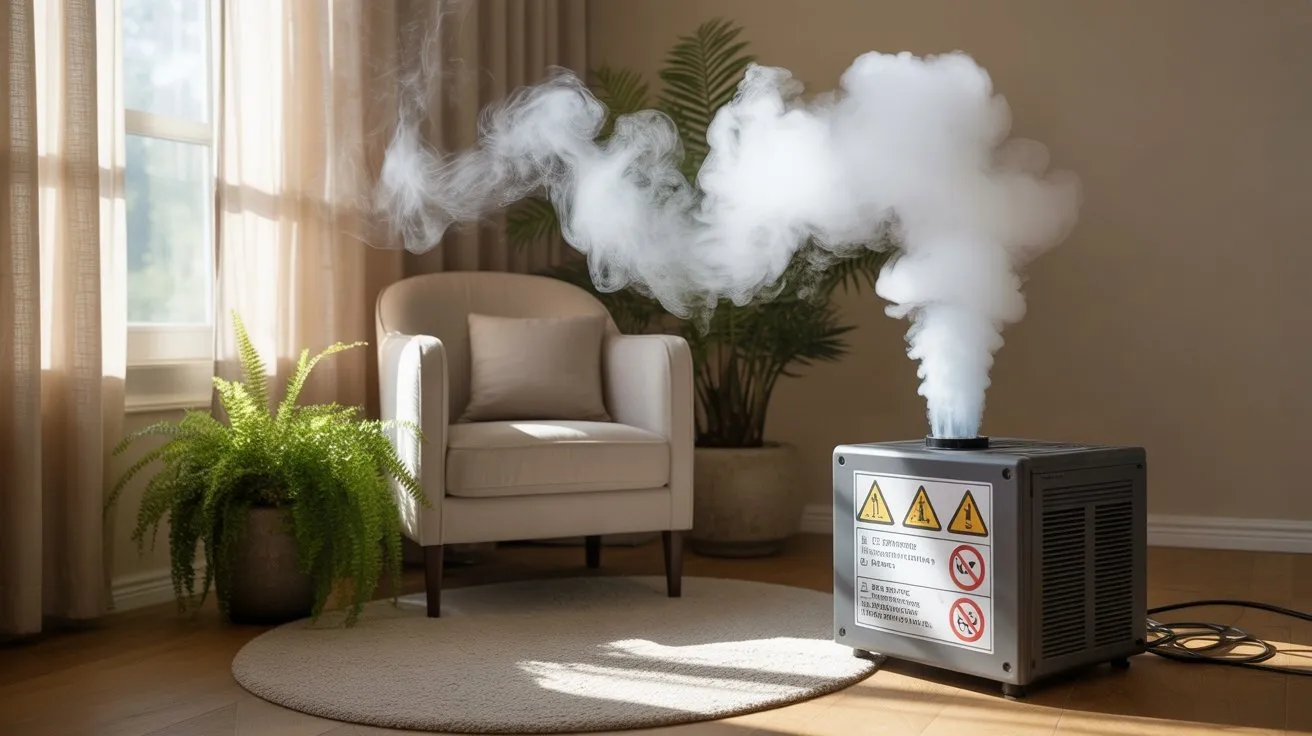
After selecting your ideal fog machine, proper safety protocols become your foundation for creating a secure spa environment.
You’ll need adequate ventilation to prevent fog accumulation and maintain air quality. Install smoke detectors beforehand and inform others about your fog machine use to avoid false alarms.
Position your machine on stable, heat-resistant surfaces away from electronics and fabrics. Never leave it unattended during operation. Use only manufacturer-approved fog fluids—water-based formulas are safest for indoor wellness applications. Prolonged exposure to fog can lead to respiratory issues, so be mindful of usage duration.
Monitor room temperature and humidity levels, as excessive fog can create slip hazards on surfaces. Keep a clear exit path visible at all times.
If you experience respiratory discomfort, discontinue use immediately. Store fog fluid in cool, dry locations away from children and pets for maximum safety.
Selecting the Perfect Fog Fluid for Spa Ambiance

Your fog fluid choice directly impacts both the visual quality and wellness benefits of your spa atmosphere. Water-based fluids create lighter, more ethereal effects that dissipate quickly, while oil-based options produce denser, longer-lasting fog. For spa environments, you’ll want low-residue, non-toxic formulations that won’t trigger respiratory sensitivities.
| Fluid Type | Atmosphere Created |
|---|---|
| Distilled Water | Pure, clean mist |
| Glycol-based | Thick, luxurious fog |
| Herbal-infused | Aromatherapy enhancement |
| Quick-dissipating | Subtle, gentle effects |
Consider scented options containing eucalyptus, lavender, or chamomile for enhanced relaxation benefits. Always verify compatibility with your machine’s specifications and confirm the fluid meets food-grade safety standards. Premium spa-grade fluids cost more but deliver superior air quality and visual appeal that’s essential for creating authentic wellness experiences. Additionally, using distilled water in your fog machine can prevent damage and ensure optimal performance.
Optimal Placement and Positioning Techniques
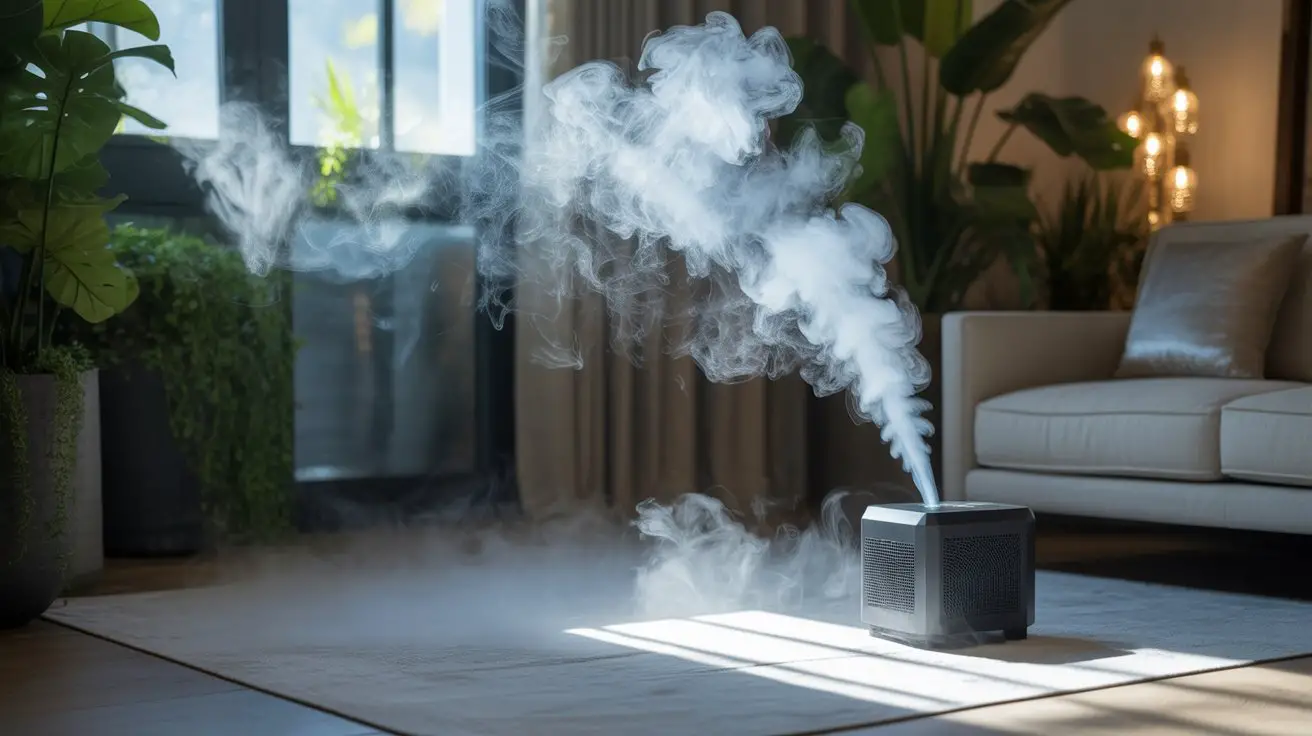
Strategic fog machine placement determines whether you’ll achieve a mystical sanctuary or an overwhelming haze that disrupts your clients’ breathing comfort.
Position your fog machine at floor level, directing output toward cool surfaces where heavier-than-air vapor naturally pools and disperses gradually.
Place units behind decorative screens or plants to conceal machinery while maintaining atmospheric flow. Avoid direct positioning near air vents, which’ll scatter fog unpredictably and waste fluid.
Corner placement works exceptionally well, allowing fog to drift across the room’s perimeter rather than concentrating centrally.
Consider your room’s ventilation patterns—fog should complement natural airflow, not compete against it.
For larger spaces, use multiple smaller units rather than one powerful machine. This approach creates layered ambiance while preventing dense concentration in any single area that might overwhelm guests. Additionally, be aware that fog machines can trigger fire alarms due to the smoke particles they produce, so it’s essential to manage their use carefully.
Creating the Ideal Lighting to Enhance Fog Effects
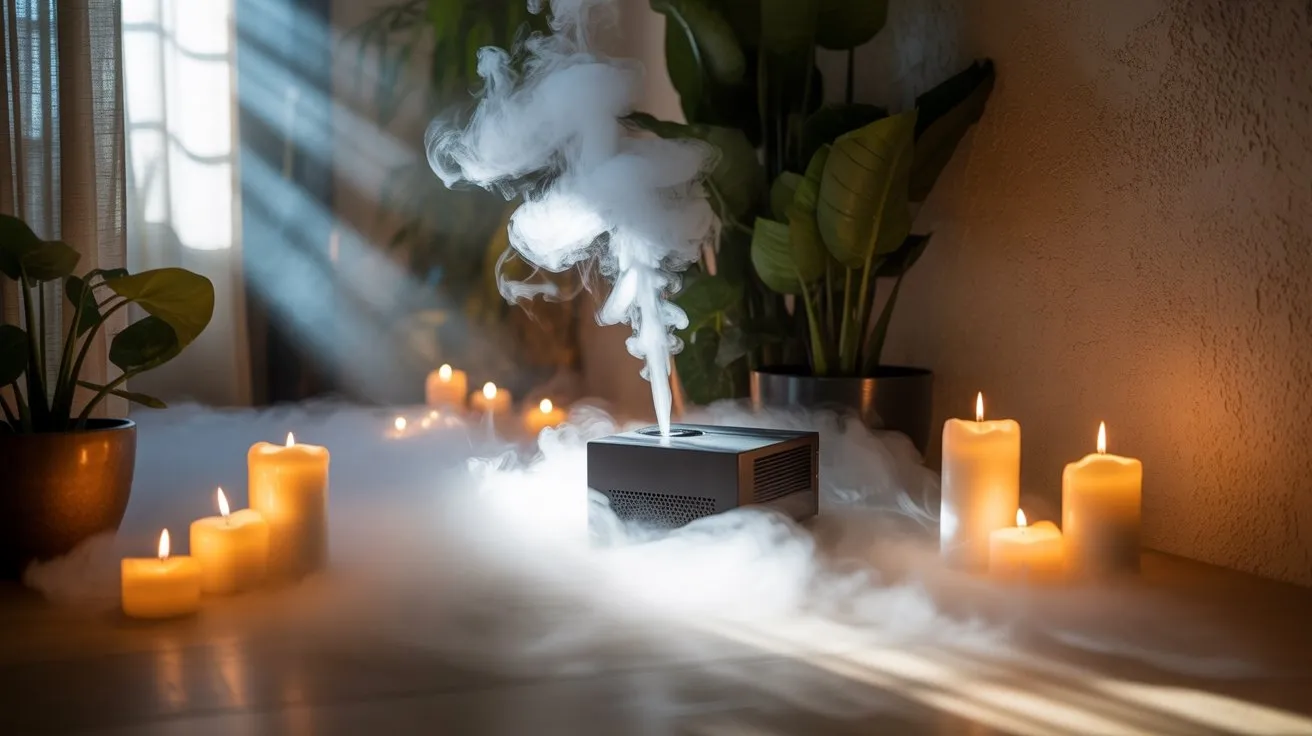
Low-angle lighting transforms ordinary fog into ethereal clouds that define your spa’s atmospheric architecture. Position LED strips near floor level to create dramatic uplighting that catches fog particles, producing mystical columns of illuminated vapor. You’ll achieve ideal results by coordinating color temperature with your wellness goals. It’s important to ensure adequate ventilation during use to minimize health risks associated with inhaling fog machine smoke.
| Light Type | Color Temperature | Fog Enhancement | Wellness Effect |
|---|---|---|---|
| LED Strips | 2700K Warm | Soft amber glow | Deep relaxation |
| RGB Panels | Variable | Dynamic color shifts | Mood elevation |
| Spotlights | 3000K | Defined beams | Focus enhancement |
| Candles | 1900K | Flickering warmth | Stress reduction |
Avoid overhead lighting, which flattens fog’s dimensional qualities. Instead, use backlighting through translucent screens to create depth. Dimmer controls let you adjust intensity throughout your spa session, maintaining perfect ambiance balance.
Timing and Duration for Maximum Relaxation Impact

When timing fog release perfectly, you’ll create a crescendo of relaxation that mirrors your body’s natural stress-reduction cycle. Deploy fog in 3-5 minute intervals during your spa session’s initial phase to establish atmospheric immersion.
Your nervous system requires 8-12 minutes to shift from sympathetic to parasympathetic dominance, so maintain consistent fog density throughout this shift period.
For deep tissue treatments, activate fog 2-3 minutes before beginning to prime your sensory receptors. During meditation or breathwork, use intermittent 30-second bursts every 5 minutes to maintain ambient mystery without overwhelming your respiratory system.
Conclude sessions with a 2-minute fog fade-out, allowing gradual atmospheric clearing that parallels your return to alertness.
This synchronized approach optimizes your body’s relaxation response while preventing sensory adaptation that diminishes therapeutic benefits.
Maintenance and Cleaning Your Fog Machine

Regular maintenance guarantees your fog machine delivers consistent therapeutic benefits while preventing costly repairs and health hazards.
Clean your machine after every 40 hours of operation using distilled water to flush the heating element and prevent mineral buildup. Remove the fluid tank weekly and wash it with mild soap solution, then rinse thoroughly to eliminate bacteria and residue.
Replace worn seals and gaskets immediately to maintain proper pressure and prevent leaks that could damage your spa environment.
Store your machine in a dry location with remaining fluid drained completely. Check heating elements monthly for corrosion or damage that could affect fog quality.
Use only manufacturer-recommended cleaning solutions to preserve internal components and maintain your warranty coverage.
Combining Aromatherapy With Fog for Enhanced Wellness

Since aromatherapy amplifies the therapeutic properties of fog treatments, you’ll create a multi-sensory wellness experience that targets both respiratory and psychological health.
Add essential oils directly to water-based fog fluid at a 1:100 ratio to prevent equipment damage. Lavender promotes relaxation and reduces cortisol levels, while eucalyptus clears respiratory passages and enhances breathing capacity. Peppermint stimulates circulation and mental clarity, making it ideal for morning sessions.
Position your fog machine near ventilation sources to guarantee proper oil distribution throughout the space. Start with lower concentrations to test individual sensitivity levels, then gradually increase intensity based on comfort.
Monitor fog output consistency, as oils can affect fluid viscosity. Clean your machine more frequently when using aromatherapy additions to prevent residue buildup and maintain peak performance for future wellness sessions.
Frequently Asked Questions
Can Fog Machines Trigger Smoke Alarms in My Home?
Yes, fog machines can trigger smoke alarms since detectors can’t distinguish between fog and smoke particles. You’ll want to temporarily disable photoelectric alarms or use ionization-only detectors, which react less to fog vapor during your wellness sessions.
Will Fog Damage My Furniture, Electronics, or Home Decor?
You’ll protect furniture, you’ll safeguard electronics, you’ll preserve decor by choosing water-based fog fluids over oil-based alternatives. Proper ventilation prevents moisture buildup while quality machines produce residue-free vapor that won’t damage your wellness sanctuary.
How Much Does It Cost to Operate a Fog Machine Regularly?
You’ll spend $0.50-$2.00 per hour operating most home fog machines, depending on fluid consumption and electricity usage. Water-based glycol fluids cost less than oil-based options, making regular wellness sessions affordable.
Can I Use a Fog Machine if I Have Pets or Houseplants?
Like introducing a new element to your ecosystem, you’ll need caution with pets and plants. Use water-based fog fluids only, guarantee proper ventilation, and monitor your furry friends and greenery for any respiratory distress.
Are There Any Legal Restrictions on Residential Fog Machine Use?
You’ll typically find no specific residential fog machine restrictions, but you must check local fire codes and HOA regulations. Always verify you’re using theater-grade, non-toxic fog fluids that won’t trigger smoke detectors or violate air quality standards.
Conclusion
You’ve now revealed the secrets to transforming your home into a sanctuary of serenity. By implementing proper machine selection, safety protocols, and strategic placement techniques, you’ll create professional-grade spa effects that rival commercial establishments. Remember, consistency in maintenance and thoughtful aromatherapy integration will guarantee your fog-enhanced wellness sessions remain effective and safe. Your investment in quality equipment and proper technique will pay dividends in stress relief and relaxation for years to come.

